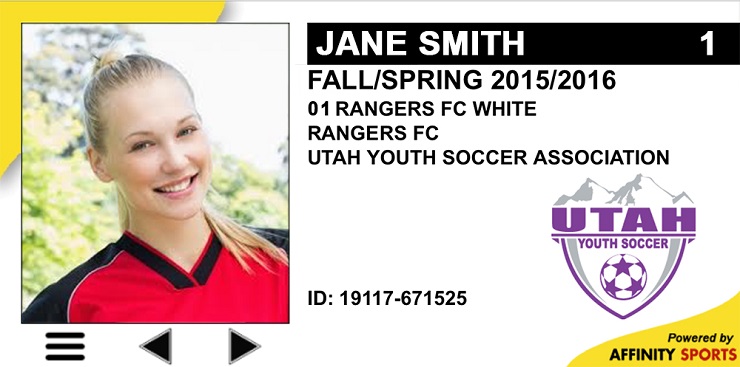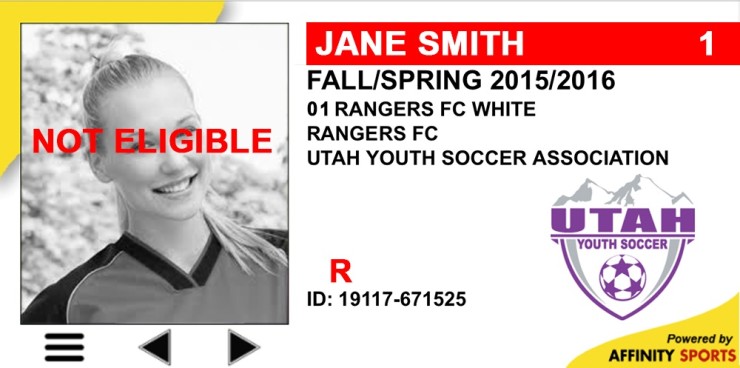Technology Helps Make A Real Positive Impact on Soccer
Tired of worrying about those laminated paper player cards – if they are lost or stolen, the youth soccer team is often disqualified – Finally, interactive digital player cards are available and people are thrilled.
“Technology surrounds us everywhere but on the soccer field,” said Mark Skeen, CEO of Affinity Sports, a San Diego based firm specializing in solutions for sports organizations. “I knew we could bring useful technology to the soccer fields across America and have a positive impact on growing the game and keeping our kids safe.”

This week, Affinity Sports announced the launch of their Interactive Digital Player Cards for the youth and adult soccer market in the USA. Harnessing the power of technology, Affinity Sports has a replacement for those antiquated, printed player cards — highly secure, digital player cards accessible on any smart phone.
Isn’t it about time?
Personally, I am tired of being able to fly to Europe with my airline ticket on my iPhone, paying for Starbucks and Panera with my iPhone, and, of course, going to the movies with my tickets on my, yes, iPhone. Why couldn’t my cell phone be more useful on the soccer fields of America? Well, now it is.
This groundbreaking solution will help meet the needs of more than 1.2 million soccer players across the country.
Now, coaches, referees, tournament directors and team managers can rely upon Affinity Sports’ state of the art mobile platform, which can easily be accessed on any mobile device to check players in before a youth soccer game or tournament. Gone will be the days when people try to paste a different player picture on a paper card and then re-laminate it and pass it off.
Yes, I have actually had top tournament directors of the most prestigious youth soccer tournaments in the USA tell me they have walked the parking lots and caught people doing this.
The digital player cards are interactive. What does this mean? The technology is simple – and responsive.

A referee can give a player a yellow or red card and with a simple click of a button on the mobile application, he or she can let the system know and the player is then ineligible to play. The player’s picture on the digital card turns black and white and there is a big notification mark. The system automatically makes the player eligible to play again once the penalty period is completed. And, yes, there is a management override system as well.

The interactive player card also tracks injury/concussion return to play protocols, protecting our children from being able to return to the field before medially cleared. This is not big brother but simple organization of information and the ability for us to access this info on our cell phones.
How has the youth soccer world reacted?
“American youth soccer — in general — is in the dark ages. Most businesses embraced technology 10 years ago. Soccer is filled with mom and pop organizations staffed with volunteers who mean well, but are not necessarily able to take advantage of what technology offers. Utah Youth Soccer Association gave up paper player cards years ago and uses Affinity Sports. Utah’s population is highly educated, and even laptops are old technology for us,” said Brian Smith, President of the Utah Youth Soccer Association.
Bob Turner, the President of San Diego Presidio Soccer League, recently previewed and tested the Affinity Sports’ Digital Cards last month. “The Digital Cards were used for checking in youth soccer players at the San Diego Development Academy Showcase, and people were amazed,” said Turner. “The soccer coaches and managers thought the system was too easy!”
“Everyone enjoyed using the digital cards instead of those old fashioned, laminated paper cards on a ring, and the ability to also score the game right from the field was incredible,” said Turner. “The scores posted perfectly.”
“What most people do is very archaic. Youth soccer team managers are still forgetting their player cards or losing them. Player cards are even stolen sometimes. We really look forward to using the Affinity Sports mobile platform for the season. Getting kids on the field is our goal, and now teams will not have to forfeit games because we will have this tool.”
“A goal of technology is to make everyone’s life easier,” said Smith, who brought in the best technology on the market for his state to use and selected Affinity Sports to run the state’s youth soccer association. “People come first, then technology supports the human effort,” said Smith. “Paper player cards are antiquated. The youth soccer players’ birth certificates are loaded into the Affinity system and are securely protected – not visible but confirmed – and any smart phone on the field can access the necessary information to check in a team and confirm the eligible players.”
“I believe the Affinity Sports Digital Cards are more secure than paper player cards,” said Turner. “Everyone knows people have tried to cheat with the old player cards. We have caught people trying to paste a new player’s picture over an old player’s picture and then re-laminate the card.”
The Affinity Sports mobile app can be securely logged in from anywhere with internet access and provides role-based access. In simpler terms, when a referee logs in before a soccer match, he or she sees the full set of both teams’ player and coach cards. When a team manager logs in, he or she only sees their team information.
“Having the player cards right on my cell phone is such a vast improvement,” said Turner, who has worked in the youth soccer world for over twenty years. “This is the way of the future.”
 The mobile app also features a schedule, Google driving directions, iCal feed, news feed and private text messaging within teams. Team managers can send a message to all the players instantly about a change of field location or what restaurant to meet at after the game.
The mobile app also features a schedule, Google driving directions, iCal feed, news feed and private text messaging within teams. Team managers can send a message to all the players instantly about a change of field location or what restaurant to meet at after the game.
Digital Player Cards are also green and help conserve paper. “Working to protecting our environment is a great goal for 2016,” said Skeen. “Wasting paper today is ridiculous when technology makes it so easy to use the digital form instead.”
There is little evidence of digital technology on most soccer fields in the USA. Now, that will be different.
Usually when one thinks about technology and soccer, Goal Line Technology comes to mind. Why should technology just be used for the professionals? Isn’t it about time we stop worrying about where the laminated player cards are and use our cell phones — and even update scores right from the field?
Now, we can just wait to see how long it takes for these Digital Player Cards to be adopted all across the country. Come on team managers, parents, coaches, referees and tournament directors – speak out and let’s embrace making our lives easier today.
Related Articles: Youth Soccer Loves Technology: Utah Is Leading The Way






